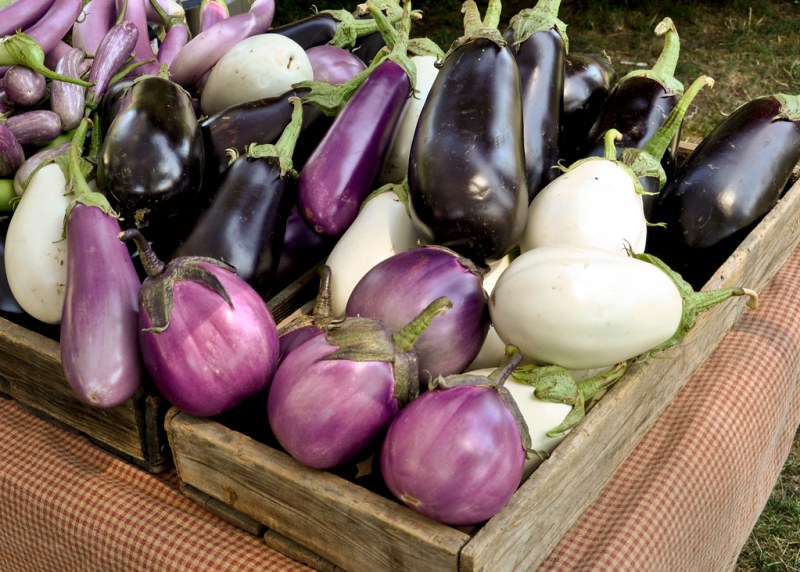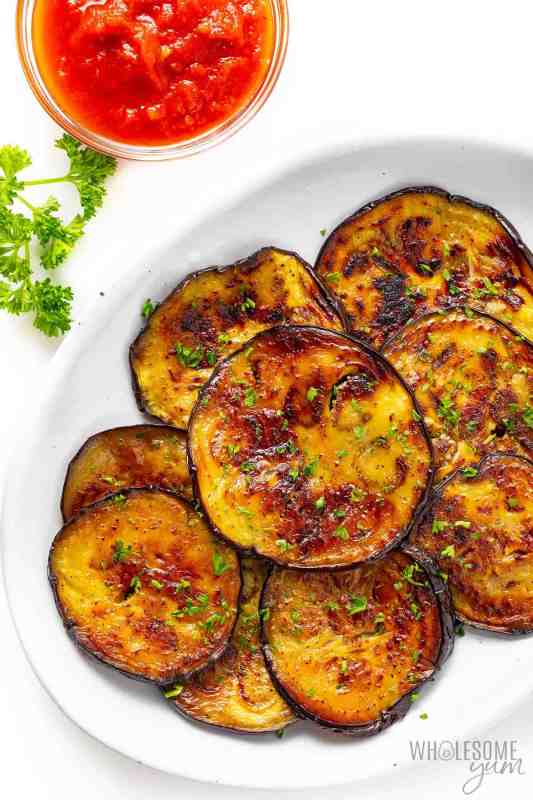Perhaps one of the most versatile ingredients of the produce section, eggplant is a fruit (yep, a fruit) that can take on and shine in almost any cooking method, soaks up flavor readily and happily, holds its own as a hearty meatless alternative, and generously nourishes the body — all while making us giggle with its suggestive emoji, used as an alternative to more illicit content. And yet, somehow, this wonderfully wholesome (and comically phallic) ingredient often doesn’t get the appreciation it deserves. When one thinks of how to cook eggplant, dishes such as eggplant parmesan or classic ratatouille come to mind. Two dishes that are exquisite, to be sure, but certainly not all eggplant has to offer.

Why Eggplant Deserves More Love
Eggplant is a versatile food
Eggplant has a sturdy, almost meaty structure, making it perfect for grilling, braising, baking, or sautéing. This structure and texture are also what make it a wonderful meat alternative for those sticking to a plant-based diet. Like mushrooms, eggplant’s meatiness can handle the heat, and is filling enough to take center stage on the plate. Its taste is mild and subtle, comparable to a zucchini, with slightly earthier notes. Its tamer flavor profile makes it perfect for saucier dishes, soups and braises, as it will take on and complement these heavier flavors.
The versatility of eggplant makes it a superstar in our books. For meat-eaters, vegans, vegetarians, and everyone in-between, eggplant is wonderful as a main dish in any number of ways. Grated and stirred into a sauce, it will add texture and a subtle earthiness. Tossed onto a sheet pan and roasted with other fall vegetables, it both complements and shines on its own. If that emoji has you feeling a little naughty, cut it into strips and deep fry it. Go ahead and be bad.
Eggplant’s mild taste and hearty bite allow it to absorb so many flavors without losing its own gusto, and we love it for that.
Eggplant is nutritious
And if its superpowers in the kitchen weren’t enough, the health benefits of eggplant are surprisingly vast. With about as many calories as a stick of gum, it still manages to contain a high number of antioxidants and vitamins. It’s also wonderful for heart health, and can help keep your blood sugar in check.
So the next time you find yourself chuckling childishly at the eggplant display in the grocery store, go ahead and have your laugh, then toss one or two in the basket. It’s time to bring this delicious ingredient back…with a bit more dignity this time.
Sautéed Eggplant Recipe

(From Wholesome Yum)
While there are certainly a limitless amount of dishes that can be created or improved with eggplant, this simple recipe is meant to be a reminder that this star ingredient shines beautifully almost entirely on its own. With nothing more than a few basic spices and some olive oil, eggplant caramelizes deliciously in minutes. Serve with any number of dishes, from steak to chicken to lamb. Alternatively, you could serve this on a bed of greens, top with a little parmesan, and let the eggplant steal the show.
Ingredients:
- 1 medium eggplant (about 1 lb, sliced into 1/4-inch-thick rounds)
- 1/2 tsp garlic powder
- 1/4 tsp sea salt
- 1/4 tsp black pepper
- 1/4 cup olive oil (more as needed)
Method:
- Slice the eggplant crosswise. You want the circles to be about 1/4 inch (6 mm) thick.
- Once you are done slicing, Cut off the leafy end. Pat the slices dry if they are damp.
- Sprinkle garlic powder, sea salt, and black pepper on both sides of the eggplant slices.
- Pour 2 tablespoons of olive oil into your skillet and heat over medium-low to medium heat. Once you’ve reached the desired temperature, add the eggplant slices. Work in batches so that the slices are all in a single layer. Sauté eggplant until the slices are soft, browned and caramelized on both sides (this will take approximately 3-6 minutes per side).
- Repeat with the remaining batches of eggplant slices. You’ll need to add 1-2 tablespoons of oil per batch.



